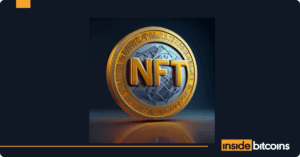Xavier Buck: Europe Lags Behind in Stablecoin Adoption and Innovation

The Future of Blockchain: A Pivotal Moment Beyond Bitcoin
Understanding the Shift in Blockchain Technology
Xavier has long championed the potential of blockchain, emphasizing that it should not be solely identified with the volatility of bitcoin. He recently highlighted a crucial turning point for the technology, particularly in Europe, where regulatory changes are fostering a more stable investment environment. The introduction of the Markets in Crypto-Assets (MiCA) regulation has clarified the landscape, allowing institutional investors to engage more confidently, moving away from the chaotic early days often likened to the Wild West.
- Understanding the Shift in Blockchain Technology
- The Balance of Regulation and Innovation
- Institutional Adoption and Market Transformation
- The Ripple Effect of Demand on Prices
- The Role of Stablecoins in the Ecosystem
- The Importance of Regulatory Evolution
- The Need for Specialized Regulation
- The Future of Tokenization and AI Integration
- The Potential of Crypto in Public Funding
- Cybersecurity and the Role of AI
- Key Terms to Understand
The Balance of Regulation and Innovation
While many in Europe express concerns over excessive regulations, MiCA and Luxembourg’s Virtual Asset Service Provider (VASP) framework have created a more favorable climate for institutional and professional investors. However, this comprehensive regulation has also imposed significant constraints on technological innovation within the blockchain sector. While it protects investors, it may inadvertently stifle the creativity of emerging tech players.
Institutional Adoption and Market Transformation
The landscape is changing as institutional investors and even governments, such as Qatar, begin to invest significantly in blockchain technology. The perception that cryptocurrencies are only for illicit activities is fading, and the enduring nature of smart contracts is becoming apparent. Events like Token2049 in Dubai showcase a growing interest in decentralized finance and the tokenization of various assets, including real estate and luxury goods. Major brands like Prada and LVMH are utilizing blockchain to enhance transparency and authenticity in their products.
The Ripple Effect of Demand on Prices
As demand for cryptocurrencies rises, so too will their prices, creating a cycle of increased interest and investment. This influx of capital will likely lead to a flourishing ecosystem where profits from established cryptocurrencies like bitcoin and ethereum are reinvested into riskier ventures. Most investors tend to remain within the crypto space, only exiting for personal financial needs.
The Role of Stablecoins in the Ecosystem
Stablecoins are becoming increasingly vital in this ecosystem. Investors often convert their assets into stablecoins rather than traditional currencies when seeking new opportunities. However, Europe lags significantly in the stablecoin market, holding only a fraction of the global share. The focus on a central digital euro has hindered the growth of decentralized alternatives, raising concerns about potential state control over personal spending.
The Importance of Regulatory Evolution
Xavier points out that while some countries have made significant strides in blockchain adoption, Luxembourg still has room for improvement. A proactive stance from the government, such as the Société nationale de crédit et d’investissement (SNCI) establishing a crypto fund, could enhance the country’s image in the crypto space. The public may not yet be ready for public funds to invest in cryptocurrencies, but this attitude is likely to shift as the market matures.
The Need for Specialized Regulation
To keep pace with global developments, Luxembourg requires a dedicated regulatory body similar to those in Singapore and Dubai. The current licensing process can be cumbersome, often taking up to a year, which discourages innovation. However, banks are beginning to change their perspectives on cryptocurrencies, moving from outright rejection to exploring how to integrate them into their offerings.
The Future of Tokenization and AI Integration
Tokenization is set to further accelerate the adoption of cryptocurrencies, often without the public even recognizing it as such. Companies like Reddit have successfully distributed NFTs without explicitly labeling them as crypto. The integration of AI will also play a significant role in managing investments, allowing for seamless allocation of funds into various assets, including cryptocurrencies.
The Potential of Crypto in Public Funding
Cryptocurrencies could serve as a valuable tool for public funding needs, such as defense and digital transformation, offering a degree of financial independence. However, it is crucial to strike a balance between leveraging this technology and avoiding excessive control.
Cybersecurity and the Role of AI
As blockchain technology evolves, so too does the importance of cybersecurity. AI will be instrumental in both offensive and defensive strategies against cyber threats, and Luxembourg must invest in the necessary resources to stay ahead.
Key Terms to Understand
Cryptocurrency
A decentralized digital currency that operates independently of a central bank, with bitcoin being the most recognized example.
Blockchain
A secure, transparent shared database that records transactions immutably, akin to a public ledger that anyone can access but cannot alter without consensus.
Stablecoin
A type of cryptocurrency designed to maintain a stable value, often pegged to traditional currencies, serving as a reserve currency in transactions.
Tokenization
The process of converting real-world assets into digital tokens on a blockchain, enhancing exchangeability and ownership traceability.
Smart Contract
An automated program that executes transactions or actions once predetermined conditions are met, eliminating the need for human intervention.
This article was originally produced for Paperjam magazine and aims to contribute to the broader understanding of blockchain’s evolving role in finance and technology.







